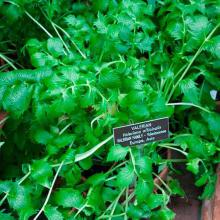Valeriana officinalis
Common name:
Valerian
Genus:
Valeriana
Family:
Caprifoliaceae
Order:
Dipsacales
Valeriana officinalis
Common name:
Valerian
Genus:
Valeriana
Family:
Caprifoliaceae
Order:
Dipsacales
Valeriana officinalis
Common name:
Valerian
Genus:
Valeriana
Family:
Caprifoliaceae
Order:
Dipsacales
Family (Plantae):
The Caprifoliaceae or honeysuckle family is a clade of dicotyledonous flowering plants consisting of about 860 species[2] in 42 genera, with a nearly cosmopolitan distribution. Centres of diversity are found in eastern North America and eastern Asia, while they are absent in tropical and southern Africa.
The Valerianaceae family, was a family of flowering plants that is now considered part of the Caprifoliaceae. Plants are generally herbaceous, and their foliage often has a strong, disagreeable odor. They are found native in most regions of the world except for Australia. Some species are cultivated as ornamentals or used in herbal medicine for inducing relaxation and sleep.
Description
The flowering plants in this clade are mostly shrubs and vines : rarely herbs. They include some ornamental garden plants grown in temperate regions. The leaves are mostly opposite with no stipules (appendages at the base of a leafstalk or petiole), and may be either evergreen or deciduous. The flowers are tubular funnel-shaped or bell-like, usually with five outward spreading lobes or points, and are often fragrant. They usually form a small calyx with small bracts. The fruit is in most cases a berry or a drupe. The genera Diervilla and Weigela have capsular fruit, while Heptacodium has an achene.
Reference: Wikipedia

